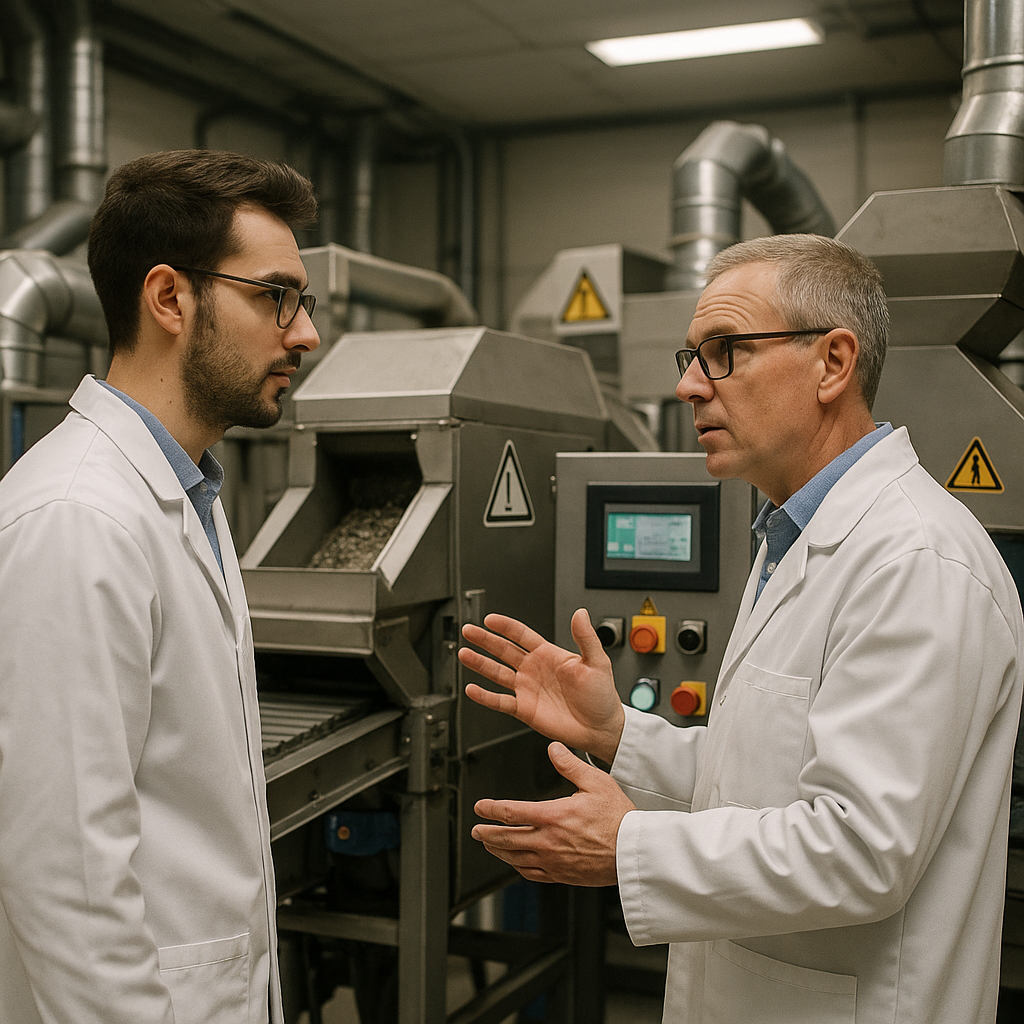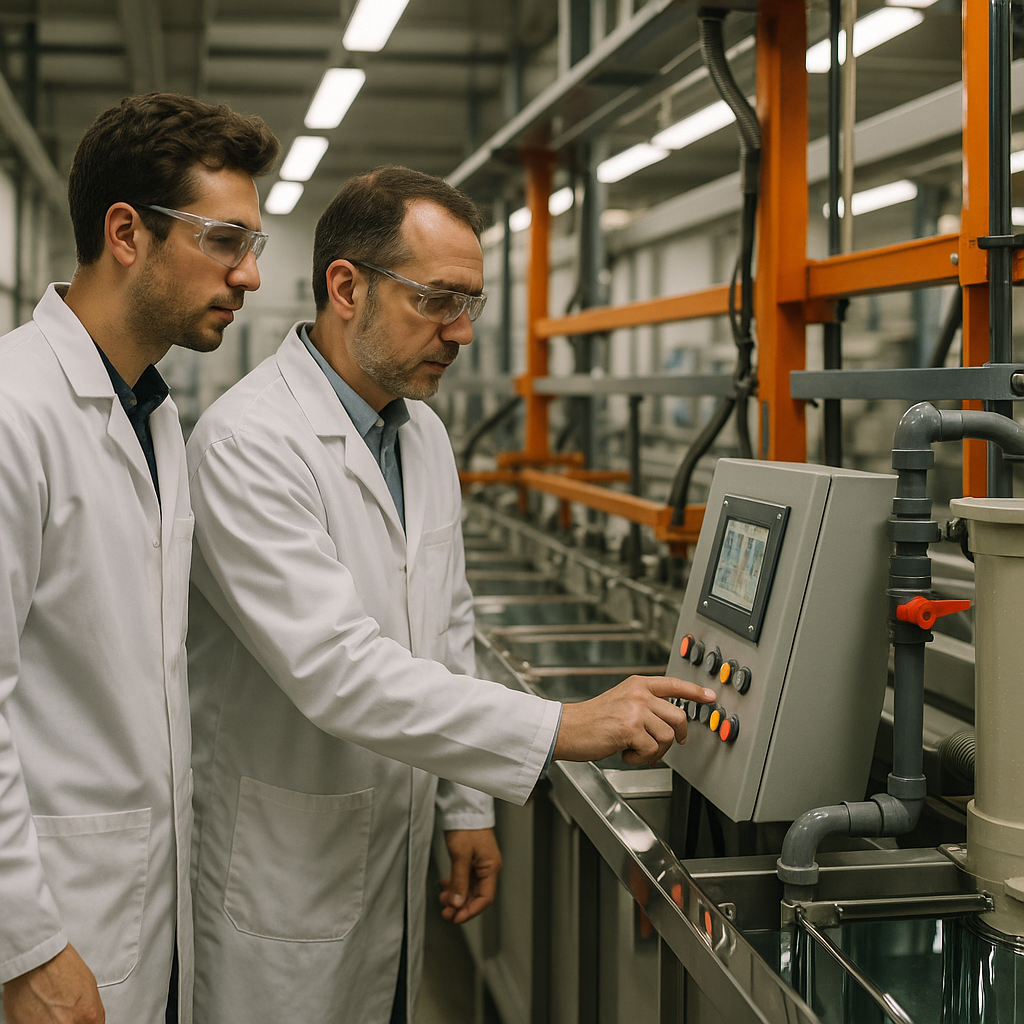5901 Botham Jean Blvd, Dallas, TX 75215
Tin Plating Recovery Process: Technologies, Optimization, and Environmental Benefits
October 9, 2025The tin plating recovery process is a specialized recycling technique that extracts valuable tin from spent plating solutions and manufacturing waste streams. This process transforms potential industrial waste into a reusable resource. Metal finishing operations can reclaim this precious metal while reducing their environmental impact.
As manufacturing grows more resource-conscious, tin recovery has gained importance. The rising cost of raw tin, combined with stricter environmental regulations, makes recovery both economically beneficial and legally necessary. For metal finishing companies, effective recovery systems directly influence their financial performance.
Modern tin recovery methods vary in complexity and efficiency. Techniques such as evaporation concentrate the tin solution by removing excess water. Ion exchange systems capture tin ions using specialized resins. Electrowinning applies electrical current to deposit tin onto cathodes for collection. Reverse osmosis uses membrane filtration to separate and concentrate tin from waste streams.
What are the Key Recovery Technologies?

Tin recovery technologies are pivotal in reducing environmental impact and advancing towards a circular economy. These methods extract valuable tin from industrial processes and waste streams, offering both economic and ecological benefits. Here are the primary technologies enabling effective tin recovery.
Evaporation
Evaporation systems concentrate tin-bearing solutions by removing water, allowing tin to be recovered and reused in production.
- Atmospheric Evaporators: Use ambient air to evaporate water from tin solutions. They have low capital costs and simple operation but require constant heating.
- Vacuum Evaporators: Operate under reduced pressure, allowing water to boil at lower temperatures. They are particularly useful for heat-sensitive solutions or chemicals sensitive to air oxidation, such as stannous tin.
Evaporation effectively concentrates plating solutions with tin content, achieving recovery rates of 90-100% when properly implemented.
Ion Exchange
Ion exchange technology uses specially formulated resins to selectively capture tin ions from solutions, which can then be concentrated and recovered.
- Process: Tin-containing solutions pass through columns packed with resin beads that exchange hydrogen ions for tin ions. Once the resins reach capacity, they are regenerated with acid, releasing concentrated tin solutions.
- Applications: Effective for recovering tin from dilute rinse waters in plating operations, where direct recovery would be inefficient.
This method is suitable for low-concentration solutions and can process large volumes efficiently, though it requires proper management of regeneration chemicals.
Electrowinning
Electrowinning recovers tin in its metallic form directly from solutions using an electrical current.
- Process: Direct current is applied to a solution containing tin ions, causing the tin to plate onto a cathode. The deposited tin can then be recovered for reuse.
- Efficiency: Recovers 90-95% of available tin metals when properly implemented, producing material that can be directly reused or sold as scrap.
This technology is particularly effective for higher-concentration solutions (typically above 1 g/L) and produces tin requiring minimal further processing.
Reverse Osmosis
Reverse osmosis (RO) separates tin from water by forcing the solution under pressure against a semi-permeable membrane.
- Operation: High pressure overcomes natural osmotic pressure, allowing water molecules through while retaining and concentrating tin compounds.
- Applications: Especially useful for processing rinse waters with lower tin concentrations or pre-concentrating solutions before other recovery methods.
RO systems can achieve recovery rates of approximately 95% or higher, producing purified water that can be reused in rinsing operations.
Combining Technologies for Maximum Recovery
These technologies often work best when combined strategically. For example, reverse osmosis might concentrate a dilute tin solution before electrowinning recovers the metal, or ion exchange may purify a solution before evaporation further concentrates it.
The choice of technology depends on factors such as tin concentration, solution chemistry, volume to be processed, energy availability, and desired end product. As environmental regulations tighten and resource conservation grows more critical, these recovery technologies will continue to play an essential role in sustainable tin utilization.
How Can Plating Operations Optimize Recovery?

Optimizing tin recovery in plating operations requires a strategic approach to waste reduction and resource management. Effective recovery not only reduces operational costs but also minimizes environmental impact. Let’s explore key strategies plating facilities can implement to maximize tin recovery.
Dragout Reduction Techniques
Dragout occurs when plating solution adheres to parts as they exit the bath, representing a significant loss of tin and chemicals. Implementing proper dragout control is the first step toward optimizing recovery.
Slow withdrawal rates allow excess solution to drain back into the plating bath. Position parts at angles that facilitate drainage rather than horizontal orientations that trap solution. Vibrating or bumping fixtures gently after removal helps dislodge trapped solution.
Using proper racking designs can dramatically reduce dragout. Racks should position parts to prevent solution pooling and facilitate complete drainage. Some operations have reduced dragout by 30% simply by optimizing rack designs.
Implementing Effective Rinse Systems
Counterflow rinsing is one of the most effective recovery techniques available to plating operations. This method uses multiple rinse tanks arranged so that water flows in the opposite direction of part movement.
In a properly designed counterflow system, fresh water enters only the final rinse tank, and water then flows backward through the system, becoming progressively more concentrated with plating chemicals. The most concentrated rinse water, containing the highest tin content, can then be returned to the plating bath.
This approach can reduce water consumption by up to 90% while recovering a significant portion of dragout chemicals. For optimal results, maintain appropriate flow rates between tanks to ensure proper dilution without excessive water use.
Bath Maintenance and Contamination Control
Regular bath maintenance is essential for effective recovery systems. Monitor and adjust key parameters, including pH levels, temperature, and chemical concentrations. Contaminated baths reduce plating quality and complicate recovery efforts.
Filter plating baths regularly to remove particulates and contaminants. Activated carbon treatment removes organic impurities that can interfere with plating efficiency. Proper anode maintenance ensures consistent metal distribution and reduces the formation of sludge that can contaminate the bath.
Controlling bath chemistry prevents the buildup of breakdown products and ensures optimal plating conditions. This proactive approach extends bath life and improves recovery efficiency.
Advanced Recovery Technologies
Several specialized technologies can significantly enhance tin recovery rates. Electrowinning uses electricity to recover tin from concentrated solutions. The process deposits tin onto cathodes, creating solid metal that can be reclaimed or used as anodes in the plating process.
Ion exchange systems capture tin ions from dilute rinse solutions using specialized resins. These systems can recover metals from very dilute solutions that other methods cannot efficiently process. The captured tin can then be regenerated from the resin using acid or alkaline solutions.
Evaporation techniques concentrate rinse solutions by removing water, allowing chemicals to be returned to the plating bath. Both atmospheric and vacuum evaporators can be effective, though energy requirements must be considered.
Selecting the appropriate technology depends on your specific operation. Factors including solution concentration, volume, and desired recovery rates will determine the most effective approach.
Monitoring and Optimization Steps
- Establish baseline measurements of current dragout rates, water usage, and chemical consumption.
- Implement dragout reduction techniques through improved racking, withdrawal rates, and drain time.
- Install counterflow rinsing systems with appropriate tank sizing and flow control.
- Maintain bath chemistry through regular testing and filtration.
- Select appropriate recovery technologies based on your specific operation.
- Monitor recovery parameters including concentration, flow rates, and recovery efficiency.
- Adjust systems regularly to maintain optimal performance.
One metal finishing facility implemented these optimization techniques and reduced their tin consumption by 45% while decreasing wastewater generation by 60%. The initial investment in recovery equipment was recouped within 14 months through reduced material costs and waste disposal fees.
Regular monitoring of recovery system performance is crucial. Track key metrics including recovery rates, chemical usage, and water consumption. These measurements help identify system issues early and guide optimization efforts.
Plating operations that implement comprehensive recovery strategies not only reduce costs but also improve environmental compliance. The combined approach of dragout reduction, efficient rinsing, bath maintenance, and appropriate recovery technologies creates a sustainable plating operation with optimized tin utilization.
What are the Environmental and Economic Benefits?

Effective tin recovery from plating operations offers notable environmental and economic benefits. The process significantly reduces hazardous waste, with many facilities experiencing 30-40% decreases in disposal volumes. Plating operations face tightening environmental regulations, and effective recovery systems help ensure regulatory compliance while avoiding expensive fines.
From a business perspective, recovered tin is immediately valuable. It can be reused in plating baths, lessening the need for virgin materials, or sold as scrap metal, generating a revenue stream that reduces operational costs. Current market values for recovered tin can notably enhance a facility’s financial performance.
The environmental benefits go beyond waste reduction. Tin recovery encourages resource conservation by reducing the need for mining raw ore, which supports a sustainable supply chain and lowers the carbon footprint related to producing and transporting virgin materials.
Waste treatment expenses are a major cost for plating operations. Companies typically see 20-30% savings in waste treatment costs by implementing effective tin recovery systems, thanks to decreased chemical usage, reduced energy consumption, and lower disposal fees.
Long-term economic benefits include improved process efficiency and increased equipment lifespan. Recovery systems optimize bath chemistry, extending solution life and enhancing plating quality. This leads to fewer rejects, less rework, and greater customer satisfaction. Operations with comprehensive tin recovery programs report significant savings over time due to reduced maintenance needs and more consistent production.
The combined environmental and economic benefits make tin recovery a vital practice for modern plating operations aiming to stay competitive while achieving sustainability goals. As regulatory pressures rise and material costs increase, efficient recovery processes become even more valuable.
Conclusion: The Future of Tin Plating Recovery

As environmental regulations tighten globally and raw material costs increase, effective tin recovery systems are becoming essential for plating operations. Modern techniques have turned what was once waste into a valuable resource stream. Recovering tin from plating processes not only addresses sustainability concerns but also provides significant economic benefits, with recovery rates now reaching up to 95% in advanced systems.
Advances in recovery methods show promising developments. Emerging solutions like polymer inclusion membranes (PIMs) offer high selectivity and efficiency for tin recovery, while methane sulfonic acid electrolytes provide a lower environmental impact and greater process flexibility. Additionally, the use of deep eutectic solvents (DESs) presents a more environmentally-friendly alternative to traditional recovery methods, potentially reducing the industry’s reliance on harmful chemicals.
For your tin plating recovery needs, contact Okon Recycling at 214-717-4083. Their team of specialists can help you implement effective recovery solutions tailored to your specific operations, ensuring regulatory compliance while maximizing material recovery and minimizing environmental impact.
